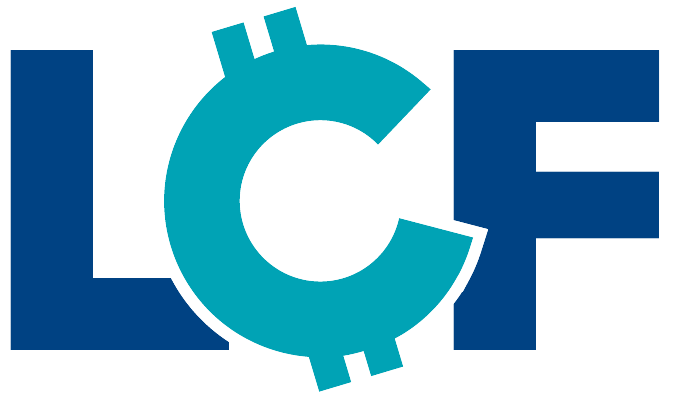Apply Now For Business Funding
Retail business loans, or retail business financing, are funding programs specially designed for business owners that are looking to get capital for: inventory purchases, expand facilities, make upgrades, or add digital commerce capabilities.
Retail business owners have several borrowing options; some are general purpose financing (used for any purpose) and others, like equipment financing, are used to finance a specific purchase. It’s important to understand the difference between small business loan options and alternative finance options as we will discuss.
How Can I Use Retail Financing?
There are quite a few ways to use retail financing. Here are a few of the more common reasons small business owners seek out retail loans:
Hiring. Whether you’re adding someone full-time or need extra hands during your busy season, adding staff can be pricy.
Marketing. Getting the word out about your company, whether it’s online or in print, is an important part of any business’s growth.
Purchasing Inventory. With supply chain issues continuing to plague retailers, using financing to stock up on your most popular items can protect your company from empty shelves. And if your supplier offers special pricing, buying a significant amount of inventory can boost your profits.
Technology upgrades. Whether it’s your security system, your point-of-sale system, or your HR software, make sure your company’s got the technology it needs to run smoothly.
Building your web presence. Is your website SEO-optimized, up-to-date, and beautiful? Have you set up your Google My Business page? If your retail store is entirely online, you’ll also need to consider your e-commerce platform, which can cost significant money each month.
Working capital. Your business needs wiggle room to operate between your cash reserves and your debt obligations. Some business owners opt for working capital loans to ensure they’re ready for whatever comes.
Renovations. If you’re operating a brick-and-mortar retail store, you may find it necessary to upgrade or renovate significant portions of your space.
Equipment financing. Do you need specialized equipment in your store, whether it’s an advanced computer, inventory trackers, or display fixtures? Several types of retail business loans can help make those purchases.
Refinancing Existing Debt. If you took out a loan as a new business and have improved your credit since then, you might consider seeking out a loan to refinance your existing debt.
Types of Business Financing for Retail Businesses
With such a variety of ways retailers can use a loan, there are a number of funding options available to retail industry professionals.
Term Loans
Term loans are traditionally-structured loans offered by banks, alternative lenders, and credit unions. They’re called term loans because they offer a defined term (length of time) when the money needs to be repaid. Term loans commonly have a fixed interest rate and are given as a lump sum to the borrower.
SBA Loans
Most Small Business Administration (SBA Loans), are structured as term loans. However, there’s a significant difference: the SBA guarantees the loans to the lenders.
That means that if a borrower is for some reason unable to repay their loan, the SBA pays the lender up to 85% of the value of the loan, protecting the lender from losing money. There are two main SBA lending programs that can work for retail businesses.
SBA 7(a) Loans
If you meet the requirements, SBA loans can be the best retail business loans available. That’s because loan amounts are available from $50,000 to $5 million, with loan terms of up to 25 years for real estate and up to 10 years for equipment and working capital.
Interest rates on 7(a) loans are determined by the lender and are based on the prime rate, but with a cap set by the SBA. The SBA charges a guarantee fee for 7(a) loans which can be financed into the loan.
To be eligible for an SBA 7(a) loan, a business must meet certain criteria, such as:
-
being a for-profit business
-
having a tangible net worth of less than $15 million
-
having an average net income of less than $5 million for the past two years
-
operating within the United States
SBA Microloans
Microloans are structured similarly to 7(a) loans but are capped at $50,000. The SBA guarantees these loans through non-profit community lenders, making them perfect for when you’re looking for a smaller, short-term loan.
Business Lines of Credit
A business line of credit doesn’t operate like most loans. With a typical loan, you’ll go through a loan application process that digs into your business plan, credit history, and company performance. Then you’ll receive a lump sum in your account, which you’ll start paying back using monthly payments.
A business line of credit works very differently. Instead of the lump sum up front, the lenders offering lines of credit make a certain amount of funds available to you. But you will only make payments – and pay interest – on the money you spend under that credit limit. They work a lot like business credit cards in that way.
Having a line of credit means you’ll always have the cash flow available to your company if a short-term emergency. Instead of rushing through the process of seeking out new funding if you’ve got a problem that needs an immediate solution, you’ve already got the cash available.
-
Lines of credit aren’t just for emergencies. In retail, you might find that your suppliers offer bulk discounts or short-term sales. Using a line of credit as inventory financing can lead to lower costs on your end.\
-
Lines of credit are flexible. Some types of loans, like equipment loans and real estate loans, require applicants to be highly specific about the ways they intend to use the new financing. Not so with lines of credit. In most cases, you can use your line of credit for any of the uses mentioned above.
-
New stores and stores with bad credit have access to lines of credit. Sure, the credit lines available to these businesses will be a bit more expensive and smaller overall than the lines of credit available to huge businesses, but most providers of lines of credit are willing to work with these less creditworthy companies.
-
Lines of credit can be secured or unsecured. When a lender requires the borrower to put up business or personal assets as collateral for a loan, that creates a secured loan. If the borrower defaults, the lender will seize the collateral and sell it, protecting the lender from financial harm. Particularly if your company’s credit is less than ideal, you may be required to put up collateral.
Equipment Financing
Equipment financing is a type of loan program intended specifically for buying, repairing, upgrading, or replacing equipment.
In a retail setting, that equipment can include computers and other inventory-tracking technology, computers, storage equipment, and showroom furnishings.
In an equipment loan, the lender will hold the newly-purchased equipment as collateral for the loan. If the borrower can’t repay, the lender is able to repossess the purchased equipment and sell it to recoup losses.
Alternative Financing: Invoice Factoring and Merchant Cash Advances
Invoice Factoring
Invoice factoring is not a small business loan. Instead, invoice factoring is a type of financing that involves selling your business’s unpaid invoices to a third party at a discount.
If your retail store does regular business with another business or for any reason makes regular monthly income using invoicing, this can be a simple, quick way to get a bolster to your cash on hand.
In most cases, an invoice factoring provider will purchase those unpaid invoices at about 95% of their total value. If your store has $10,000 in outstanding invoices each month, the factoring company may offer you $9,500 for them.
Your company receives a lump sum, and the factoring company takes over the collection of those invoices. There are a few things to keep in mind with invoice factoring:
-
It takes control out of your hands. Invoice factoring companies take over collecting money owed from your customers. If that customer has a bad interaction with the factoring company, you might lose that customer’s business despite not being the cause of their concern. On top of that, if a customer fails to pay your invoice factoring provider, they may charge you extra punitive fees. That’s despite the fact that it wasn’t you that failed to make the payment.
-
Invoice factoring moves quickly. Since the factoring company is just buying your unpaid invoices, your credit score and other typically-important factors are less of a concern. And that means you can skip the lengthy investigation into your company’s credit history. Instead, you can simply show your unpaid invoices and get a quick decision. Many invoice factoring companies will have cash in your account on the very same day you apply.
-
Invoice factoring is a fast, short-term financing option. Because it’s a simple purchase, there are no extended payments or long-term impacts to your business plan. You sell your invoices, receive your cash, and move on with business.
Merchant Cash Advances
Like invoice factoring, a merchant cash advance (MCA) is a transaction, not a type of loan. They can be particularly helpful to retail companies since a merchant cash advance provider purchases a percentage of the company’s future debit and credit card sales. MCAs are often offered through alternative finance companies online, featuring streamlined online applications and fast decisions.
MCAs aren’t assigned an interest rate. Instead, companies receiving them are given a factor rate, typically between 1.0 and 2.0. The factor rate is multiplied by the size of the advance to determine the total repayment amount.
For example, if your company receives a merchant cash advance of $12,000 and a factor rate of 1.5, you’ll need to repay $12,000 x 1.5, or $18,000.
The nature of that transaction and the factor rate are what give merchant cash advances many of their benefits and their drawbacks.
-
Remittance terms typically include making payments on a daily or weekly basis. The cash advance provider receives a portion of every credit and debit card transaction, typically about 10%. That proportional payment can be a benefit or a drawback. On days your company has few sales, you won’t be responsible for disproportionately large payments. However, on days when you have a large volume of sales, you might find that you’re making large ones.
-
Paying MCAs back quickly has no benefit. In fact, if you calculate the annual percentage rate, or APR, of a merchant cash advance, paying them back more quickly can actually drive the APR up into the triple digits. That’s because unlike a term loan or some other more traditional form of financing, your company’s total repayment amount is static. The example company above will pay back $18,000 no matter how quickly it happens. Interest on a traditional loan accrues based on how much of the principal remains, so paying it back faster makes it less expensive.
-
MCAs are available to companies with poor credit. Much like invoice factoring, your company’s history of making payments on debts isn’t a major part of the decision-making process. What’s more important to MCA providers is that your company can show plenty of debit and credit card sales. For a retail company, that will likely be a significant percentage of your transactions (and if you run an e-commerce store, it will probably be the entirety of your business).
-
Because the length of your credit history is a part of your business credit score, MCAs can be helpful to startups, which often have low credit scores. If you can show that you’re processing plenty of transactions, that short history shouldn’t be a problem.
-
MCAs are funded very quickly. You might be able to receive your funding as soon as the very day you complete the application. If you have an important piece of equipment down, or if the pipes burst, an MCA can have you back up and running quickly.
Latest Blog & Articles
Securing Business Funding with Bad Credit in 2024
Obtaining financing can be a pivotal step for small business owners looking to scale their ventures. However, for those...
Small Business Financing: Understanding Merchant Cash Advances
In the world of small business financing, there's a myriad of options available, each with its own set of...
Financial Tips for the Trucking and Transportation Industry
The trucking and transportation industry is the backbone of commerce, ensuring goods are moved efficiently across regions. For small...




